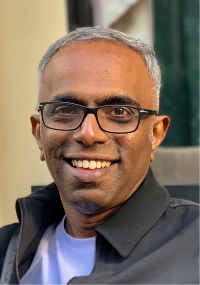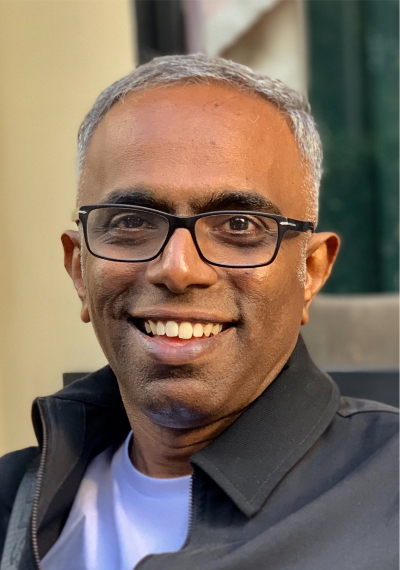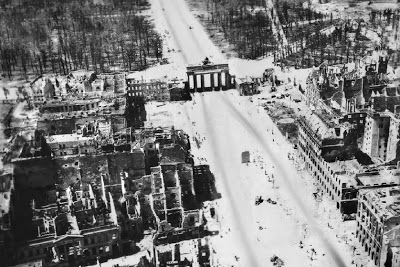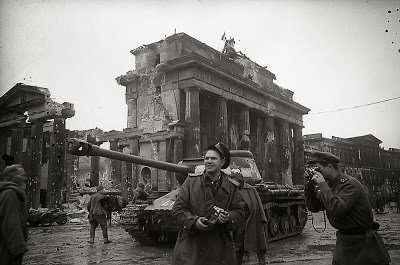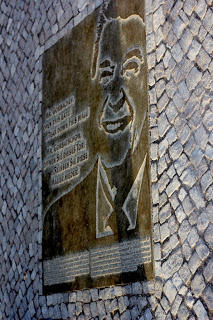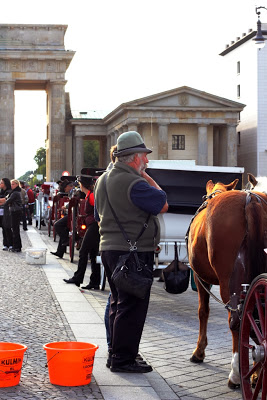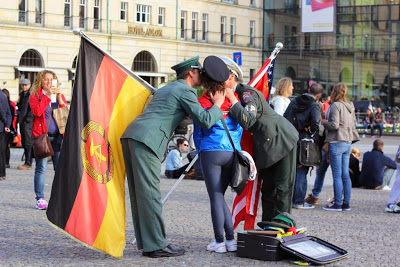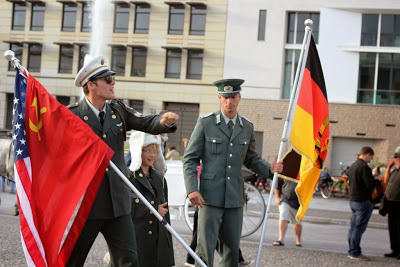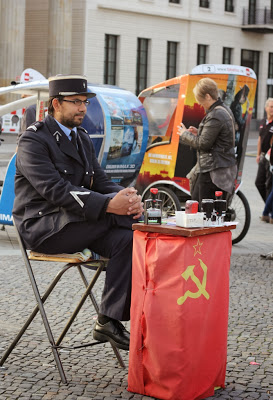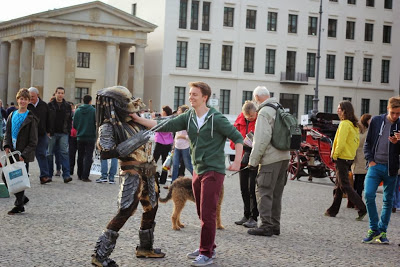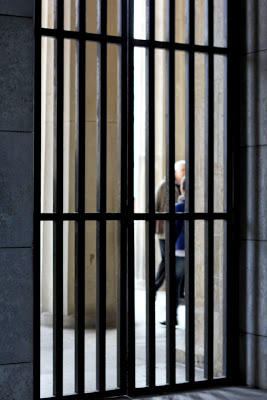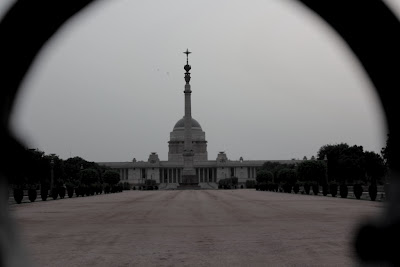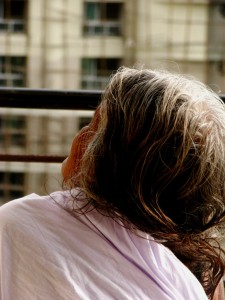History
An old gate opening a new Window : The Brandenburg Gate
War and Peace
Statue !
Ever remember playing a game called ‘Statue’ in school? Well, I do. You didn’t have to do much. Someone had to point to someone else and say ‘statue’. You were required ‘freeze’. Just pretend you are a statue and watch the other chaps lick their lollipops and wallop their chocolates. And you had to wait till they came around to point in your direction and say ‘statue’ again. If you wanted to be a winner that is.
In most cases, as soon as the lollipop was unwrapped, people gladly embraced defeat, disgorged themselves from the statues they were forced to become and went after the lollipop like an animal in heat. That story is for another time.
Here are a few statues that I found and some looking up the web lead me to some people that I didn’t know of that well and lives that made a difference to a different generation of people.
First off, there is Kavimani Desika Vinayagam Pillai. A tamil poet who translated the work of Omar Khayyam. Wikipedia doesn’t give me much else. The name is more than merely ‘familiar’ but the thirst for knowing him more stands revived. The tags underneath the post on Wikipedia point to a few things that points in a direction. They read : “• People from Kanyakumari district • Tamil poets • Indian Tamil people • 1876 births • 1954 deaths • Indian writer stubs”. Helpful!
Do give My.Iyer a look up. Atleast for the sake of his statue that has looked at every single passing vehicle on Alagar Koil Road, Madurai. Come rain or shine!
A statue again bearing the time stamp of the World Tamil Congress, 1981. For me, KK Nagar is like home! And right under his nose, I have been upto mischief, had run ins, worked studiously, ran campaigns, bought medicines and what not. But never before did I realise that Tholkappiar was looking at it all.
Wah Taj !
Going on to narrate a story of Aurangazebs cruelty and Shah Jehan’s forlorn lost last days. It was happening in real time : melodrama spiking history big time in present continuous tense !
India Gate
India Gate was one such experience for me.
The streets of India are paved with many thousands of years of history. Worth their weight in gold. ( Perhaps thats one good reason as to why the streets are so often dug up. Ok thats a joke that didnt take of. Please ignore).
Delhi especially so, oozes history through its pores !
Having seen India Gate as a standard fixture on TV, whenever any reference to New Delhi was made, it was only natural to approach it as yet another of those ‘fixtures’ to be seen.
On a Sunday evening, it can be particularly busy. With ice cream vendors competing with trinket peddlers who were arguing with sellers of maps who were attempting to be louder than some other set of people.
Amidst all this din, the muscular arches of India Gate stood gritty and steady. With enough light and just about some space amidst all the jostle to get a click or two in.
Heres some history that Wikipedia threw at me. Post the visit. Which I obviously wished I had read up before I went there. In anycase, you can read it here
It commemorates 90,000 Indian soldiers who lost the life fighting for the British Raj in many battles in distant lands during the times of the World War 1. Since independence it has become the Indian Army’s ‘tomb of the unknown soldier’.
Quite obviously, when any famous dignitary, turns up, he or she places wreaths here. Even if they have come in for signing an arms deal.
The inverted rifle & the soldiers helmet, the three services represented by their flags and the eternal flame thats on, can perhaps be a solemn sight. But on a Sunday night, I wonder significance of such a monument, melts in the frenzy of lapping up one more ice-cream !
Right in front of India Gate is a canopy which originally housed King George V’s statue. After independence the statue was suitably accommodated elsewhere and the canopy now lends itself well to the camera.
First you fight wars. Then splendid monuments are erected to remember those that died in wars. And then on Sunday nights, people come to such monuments and have ice cream.
How does just going about building monuments and feeding ice cream, without any war, sound to you ?
R for Rashtrapati
For purposes of beginning all over again, I choose a topic that has been on all news channels and probably on most of India’s mind as well : Rashtrapati http://premier-pharmacy.com/product-category/anti-fungal/ Bhavan.
Story power !
Oxfam is betting on a new way.
Imagine having to sell second hand goods. Say, used furniture. Or other items of daily use. Like sunglasses. Or combs. Or radios. Whatever.
That effort is not going to fetch anything more than a small sum, unless ofcourse those belonged to a celebrity.
Ofcourse, the celebrity quotient is comes from the story that can be told.
“This hair strand is from Elvis Priestly”.
“This coffee cup was used by Sachin Tendulkar”.
Surely, the strand of hair is not worth so much if its not associated with Elvis. Nor the coffee cup with Tendulkar. These are stories that give life to random inanimate objects.
So here is Oxfam’s very interesting game plan.
Second hand goods gain a meaning when they come with a story. If there was a way of sharing a story about a second hand product with a prospective buyer, well, the chases are more for a purchase. (Every item on second hand sale will carry a story along with it and tagged to the item using a QR code. Any prospective purchaser would get to know of the story behind the item on sale. )
“Someone might donate a record and add that it was the song that they danced to at their wedding to its tag,” The chances of a purchase brightens with the story! (Not that it would result in a purchase everytime).
Stories have great power in them. Almost magical. Every individual carries his or her own stories and it becomes easy to relate to other stories that are told .
The humdrum of everyday corporate life makes it difficult for us to take the time to listen to stories or narrate our own. But when we do narrate or when we find a patient ear, what a difference it makes.
Methodologies like Appreciative Inquiry, inherently seek story telling and can create organisation wide energy. Every story holds significance and the very act of both telling and listening to a story can be sources of great energy.
Unfortunately, language creates its own complications and the word ‘story’ can sometimes lead to the narrative being thought of as a flippant waste of time. Call them what you will, stories have in them an inherent quality that brings alive people.
Grandma and her tales !
Personally, many of us would have grown up with stories. As children stories fascinate us. For many years, I grew up with stories that my grandmother used to tell me. Those gave a huge fillip to imagination and also, in retrospect, brought a contextual understanding of morals and values that was required in the family. The best thing about them, was I always used to look forward to hearing those ‘stories’!
In the corporate world the power of stories is often underrated. Grossly.
There are exceptions though. Coca-Cola is one that I know. Coca-Cola Conversations, the blog that Coca-Cola runs is a fine example of how corporate stories build or augment a brand. Infact, Coca-Cola has a historian and archivist with them : Phil Mooney.
Only, in the modern times, technology has given consumers the opportunity of contributing their own story to the brand. That is not only more interesting, it is as authentic as it can get.
Blogs, wikis, tweets all are available for imaginative use.
Within the organisation stories from the organisations past : accounts of successes / failures / decision points etc when told with a degree of authenticity and simplicity not only aid a great deal in building a culture, they are extremely non-invasive and interesting for employees.
So much for stories ! And by the way, they work. Very nicely !
Reeking royalty !

The zoom lens on the camera were the first to spot it. A patch of brown in a sea of green. Some more zooming and out with curiosity more than anything else, least of all, understanding history, got us in front of this gate.
It looked like any other gate. A gate that was fastened with a chain and a piquant lock. The biggest battle that the gate seemed to wage was with the forces of nature and ofcourse, the undergrowth in the vicinity. Quite ordinary, you might think.

Except that we were standing on Palace Road. This was a gate that we passed twice, without realising that we were passing the gates of the Summer palace of the Raja of Travancore. At Kuttikanam. 140 kilometers South of Cochin in Kerala.
The royal folks that lived here are long gone. The palace sits in silence. Unpretentious yet majestic. The walls could tell you a multiple zillion stories. The walls… Its extra smooth walls, which if we were to believe the old caretaker and his young son, were polished with eggshells amongst a millon other things.

Teak floors. Teak roofs. The broken glass panes of windows that a royalty and their retinue would have operated, let in the fresh crisp sunrays of another lovely morning October morning. Like the windows would have, decades ago.
It’s a quaint, simple structure yet reeks of prosperity and a princely time that seem present, in their absence.
‘Nobody comes here’ says the caretaker, giving us a look half filled with surprise and the other half filled with curious disinterest. Yet, he indulges us in showing us around, and relating stories of a time that’s passed us all. A time, that he himself, has only heard of.

‘This is where the king received his guests’ he says pointing to a large hall with a spectacular window and view. He moves on, leaving you to fill up the picture of a king, his queen, generals and visitors. The tapestry of movies seen and narratives read, can feed the imagination well. Within no time, imaginative narratives of a scheming Diwan, a loyal minister, a lovely queen with the British knocking on the door, ran in my mind.
Only to be occasionally broken by the realistic narrative of the caretaker who by now was doubling up as a tour guide.” This is the queens room” he says lowering his voice marginally. Perhaps in awe. A yesteryear carpet still fills the floor. Decimated by time, and neglect.
The Royal emblem stares at you from the window. A broken cupboard still stands. Perhaps for reasons of pride, for falling down can reduce it to a pile of wood.
The toilet commodes are ‘Belgian’. The tiles Italian. The glass panes are from UK. So thinks the old caretaker and his young son. Who by now, we realize, has fed the curious minds of a few stray visitors like us. There is no reason why we wouldn’t believe what he was saying. It was adding up well.
I ran my fingers across the wall for some odd reason. Perhaps vicariously caressing royalty and a royal time. Ending up with an inch of dust and a consequent glare from the missus.
True to form, the kitchen could accommodate four ‘1 BHK’ Mumbai homes and has the giant bicep powered grinder. The hand grinder seemed remarkably dust free which intrigued us no end. The intrigue didnt last long though. ‘We use it’. He says. Quickly moving away leaving me facing the lotus shaped sinks, the vegetable racks and such else.

Right in the centre, is the ‘open to sky’ area. The undergrowth has come back with vengeance. Fungus, cobwebs and still air give the caretaker and his family company. So does life in flowers and bees.
Ofcourse there are those nuggets of architectural excellence like the central heating. Or the underground escape route, the splendour of using sunlight and the natural air, which by now, has become so de rigueur for us, that the eye brows don’t arch as much.
In a style that is typical of a city dweller who gets approached for taking a home loan once in two and half hours, we ask him about the owners and where they stay. Not that we had the slightest inkling of buying but then, you ask. As a matter of practice.
‘Its been bought by an IT company from Bangalore’ he says.
‘Ah IT’ is all that I mouth.
A quiet silence pervades the air.
Whats the point I wonder. Of meticulously buying glass from Belgium and tiles from Italy and leaving it to an elderly caretaker and simple visitors with interest that didn’t stretch far too beyond a curiousity enhanced imagination. Wistfully despairing the state of disrepair of dilapidation of what once must have been the nerve centre of a kingdom.
The nature of life and change being the only constant, sometimes gets eloquent reminders. This was one.
We walk away. My imagination in royal splendour for what now seems like an interminable period. Exciting possibilities of a beautiful queen, stately king, an interesting affair, blunder filled jester, , galloping horses, Lovely retinue, politics and twists, song and dance!
I don’t realize I am walking half in a trance, until the missus shakes me up.
‘Go clean your hands’, she says. ‘They are dusty’.
The grandest of them all !
So it was, and this post is about the Grand Canyon ! Imposing.Colourful. Instilling pride in people . Yet, so close to nature. Most importantly something thats stood around for millions of years.

Here is an attempt at perspective building : Imagine building a road that is TWICE the distance of Mumbai – Pune ( which would be a four + hour drive in sane speeds and simple cars). Quickly imagine ensuring that the road is 30 kilometers wide. Yes. 30 full kilometers wide. Even before that can settle down, think of digging the ground 6000 feet to make this road !
That’s the size of the Grand Canyon. 446 kilometers long. 30 Kilometers wide. 6000 feet deep ! All engineered by mother nature’s masterstrokes. One amongst them being the Colorado river whose continuous flow is said to have created this art in the mountain with corrosion as a tool!
Logical that the posts commence with the Grand Canyon. Isnt it !?!
As we stood on the west rim of the Grand Canyon and looked at the myriad shades of crimson on a series of walls that seemed to extend forever and beyond, greed announced its arrival with a desire to take a closer look. Perhaps touch the sands of the Colorodo river? At a depth of 6000 feet?
America singularly stands out for being a land of choice. If a desire is implanted in the mind accompanied with a wherewithal to act on it, there is always a way to make it happen! At a cost. Ofcourse !
In what can be called a truly Californian moment of budgetary rashness, wringing the last dime in the wallet dry, we chose to have an unplanned helicopter ride.
The ride operators promised to fly us from the western rim of the Canyon, all the way down to base where the Colorodo river runs its meandering course. Plus, take a boat ride in the river! The allure to see the work of mother nature over time, was simply irresistible. We signed up at a speed that could have blinded Lewis Hamilton.





Every wring of the wallet was worth it. The rock pattern dramatically changes colour every few feet the chopper drops, like a synchronous seamless background screen change in a show. At the end of what seemed like an unlikely landing point, the chopper landed and we were face to face with the Colorado
The boat ride in the meandering river showed much of the continuous work at beauty by corrosion! As the June Sun showered his unmerciful rays with a protracted wistfulness, beads of sweat showed up on tanned foreheads, copious sun tan lotions notwithstanding. All of it compensated by a gluttonous feast for the eye and a strange peace in the heart !

To think of the Grand Canyon a month later, still evokes the same feeling. Of an exceedingly fetching view with a history that can really show what ‘long long ago’ could mean !
Please scroll below for earlier posts on the US Trip. Or find them here
